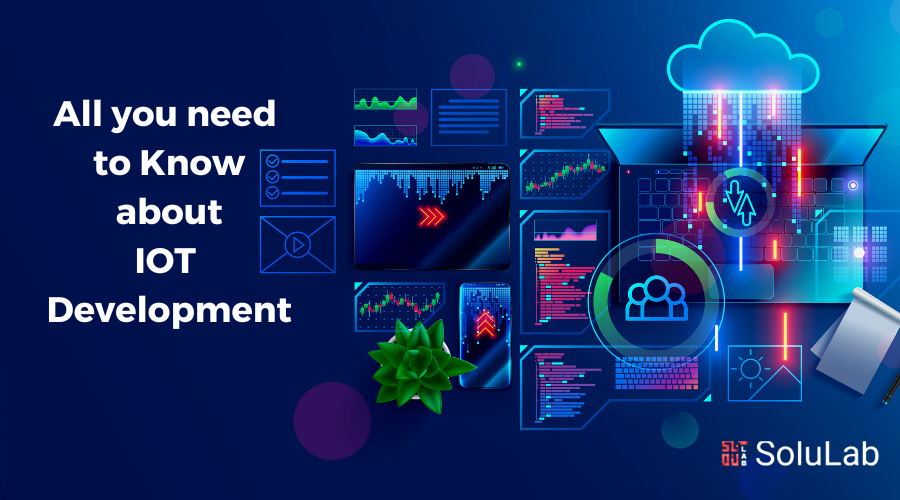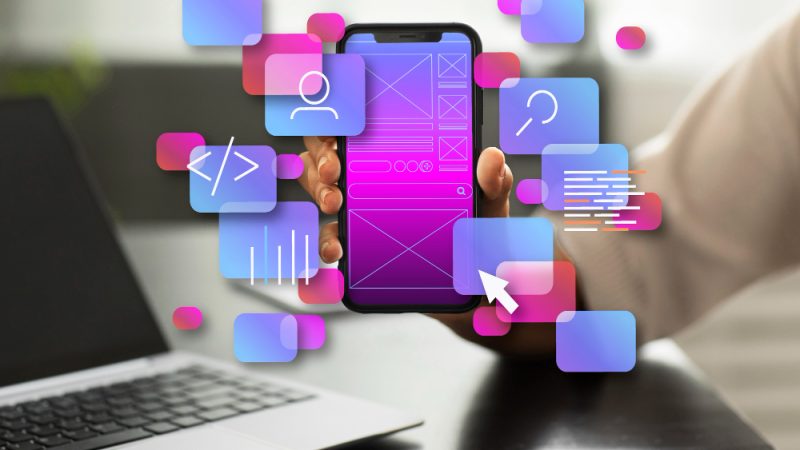All you need to Know about IOT Development

The Internet of Things is not a single technology but a collection of related technologies. Devices that aid in interacting with the physical world include sensors and actuators. It must be intelligently stored and analysed to draw valuable conclusions from the sensor data. Numerous industries utilise IoT development services for streamlining the workflow of their varied sectors including health care, fitness, education, entertainment, social interaction, energy conservation, environmental monitoring, home automation, and transportation.
The Internet of Things, according to Vermesan, is simply the interplay of the physical and digital worlds. Numerous sensors and actuators communicate between the physical and digital worlds. At the same time, Pe na-L’opez defines that the IoT is a paradigm in which networking and computing capabilities are built into every imaginable thing.
The IoT Ecosystem
Internet development devices may communicate with other IoT devices, cloud-based apps, and services thanks to networking technologies. The internet depends on standardised protocols to guarantee trustworthy and secure communication among various devices. The rules and formats devices must follow to create, operate, and transmit standard protocols specify networks. A “stack” of technologies is used to construct networks.
The IoT’s key characteristics are artificial intelligence, connection, sensors, active involvement, and the usage of small devices.
Below is a quick summary of these features:
- AI: Using data collecting, artificial intelligence algorithms, and networks, the Internet of Things (IoT) and AI turn everything into “smart” objects that improve every area of life.
- Connectivity: Networks are no longer only dependent on big providers thanks to new networking enabler technologies, particularly IoT networking. IoT between its system components builds these little networks.
- Sensors: They serve as distinguishing tools that turn the Internet of Things from a typical passive network of devices into an active system that can be integrated into the actual world.
- Active Engagement; Today’s connected tech contact involves a lot of passive engagement. IoT creates a new active content, product, or service interaction paradigm.
- Small Devices: As expected, devices have gotten smaller, less expensive, and more potent over time. IoT uses specially designed tiny devices to provide accuracy, scalability, and flexibility.
IoT − Hardware
The hardware used in IoT systems by a typical IOT Development company supports specific goals and actions; these devices manage key tasks and functions like system activation, action specifications, security, communication, and detection.
IoT − Sensors: – most significant equipment in IoT. These gadgets comprise energy, power the board, RF, and detecting modules. RF modules oversee interchanges through transmission handling, WiFi, ZigBee, Bluetooth, radio handset, duplexer, and BAW.
Wearable Hardware: Wearable electronic gadgets are little gadgets worn on the head, neck, arms, middle, and feet.
Standard Gadgets: The work area, tablet, and cellphone stay essential pieces of IoT as the war room and controllers. The work area provides the client with the most significant command over the framework and its settings. The tablet gives admittance to the framework’s critical elements in a manner looking like the work area and goes about as a remote. The cellphone permits a few basic settings changes and gives distant usefulness. Other key associated gadgets incorporate standard organisation gadgets like switches and switches.
Also Read: Incredible Ways IoT can Transform the Education Industry
IoT − Software
IoT programming tends to its vital areas of systems administration and activity through stages, inserted frameworks, accomplice frameworks, and middleware. These individual and expert applications are liable for information assortment, gadget coordination, ongoing investigation, and application and interaction expansion inside the IoT organisation.
Data Assortment: This derivative oversees noticing, accounting, light information separating, information security, and information total. It utilises specific conventions to help sensors associate with ongoing, machine-to-machine organisations. Then it gathers information from numerous gadgets and appropriates it according to the settings. It likewise works backwards by conveying information over devices. The framework ultimately communicates all collected data to a focal server.
Device Integration Software guarantees vital participation and stable systems administration between gadgets. These applications characterise programming innovation of the IoT network since it is an IoT framework with them. They deal with every gadget’s different applications, conventions, and constraints to permit correspondence.
Real-Time Analytics: These applications take information or contributions from different gadgets and convert them into practical activities or clear examples for human investigation. They examine data in light of various settings and plan to perform robotisation-related assignments or give the information expected by the business.
Application and Cycle Expansion: These applications broaden the compass of existing frameworks and programming to permit a more extensive, more viable methodology. They incorporate predefined gadgets for explicit purposes, for example, allowing admittance to specific cell phones or designing instruments. It upholds further developed efficiency and more exact information assortment.
Innovation and protocol
IoT principally takes advantage of standard conventions and systems administration advancements. Nonetheless, IoT’s major empowering advances and conventions are RFID, NFC, low-energy Bluetooth, low-energy small, low-energy radio conventions, LTE-A, and WiFi-Direct. These advancements support the explicit systems administration usefulness required in an IoT framework rather than a standard uniform organisation of normal frameworks.
IoT – Advantages
Smart health monitoring, traffic monitoring, and smart wearables are examples of everyday IoT applications. The following is a list of the additional advantages of the Internet of Things (IoT).
Increased Customer Engagement: As mentioned, engagement is still passive and current analytics have accuracy issues and blind spots.
IoT radically transforms this to enable richer and more successful audience engagement.
Technology Optimization: The same data and technologies that enhance customer experience enhance device usability and support more significant technological advancements. IoT opens up a vast universe of vital functional and field data.
Waste reduction: IoT highlights areas for improvement.
Current analytics only provide surface-level understanding, whereas IoT offers real-world data that enables more efficient resource management.
Enhanced Data Collection: Modern data collection’s shortcomings and passive design are a problem. IoT removes it from such areas and positions it precisely where people want to go to conduct analysis.
IoT Disadvantages
The Internet of Things (IoT) has a lot going for it, but it also has a lot of problems. Some of its major issues are as follows:
Security: The Internet of Things (IoT) creates a networked ecosystem of constantly connected devices. Despite all security measures, the system offers very little control. As a result, users are open to attack from various angles.
Privacy: Without the user’s active participation, IoT’s sophistication provides substantial personal data in extreme detail.
Complexity: Due to the fact that IoT systems use a large number of new enabling technologies and multiple technologies, their design, deployment, and maintenance can be challenging for some.
Conclusion
IoT development companies have become a promoting pattern and general news piece. In past exaggerations, IoT was a strong procedure with machines in various spaces. IoT can advance a good assortment of modern devices like strategies, production, food business and administration.
Novel guidelines, novel exchange, rivalry, and the need to move relentless products are difficulties new organisations face these days. The Web of Things (WOT), any presentation carried out by organisations, is therefore dependent on many organisations. To assist them in increasing their conservative profit, they show, manage, and enhance their business processes using information gathered from several connected machines.
Author Bio
Malvika is an avid reader and sports/manga fanatic. She enjoys writing about culture and geopolitics independently. When not writing, she likes to explore new coffee shops and restaurants, obsess over art, and catch her favourite shows.
Also Read: The Importance of Network Security in this Digital Age




